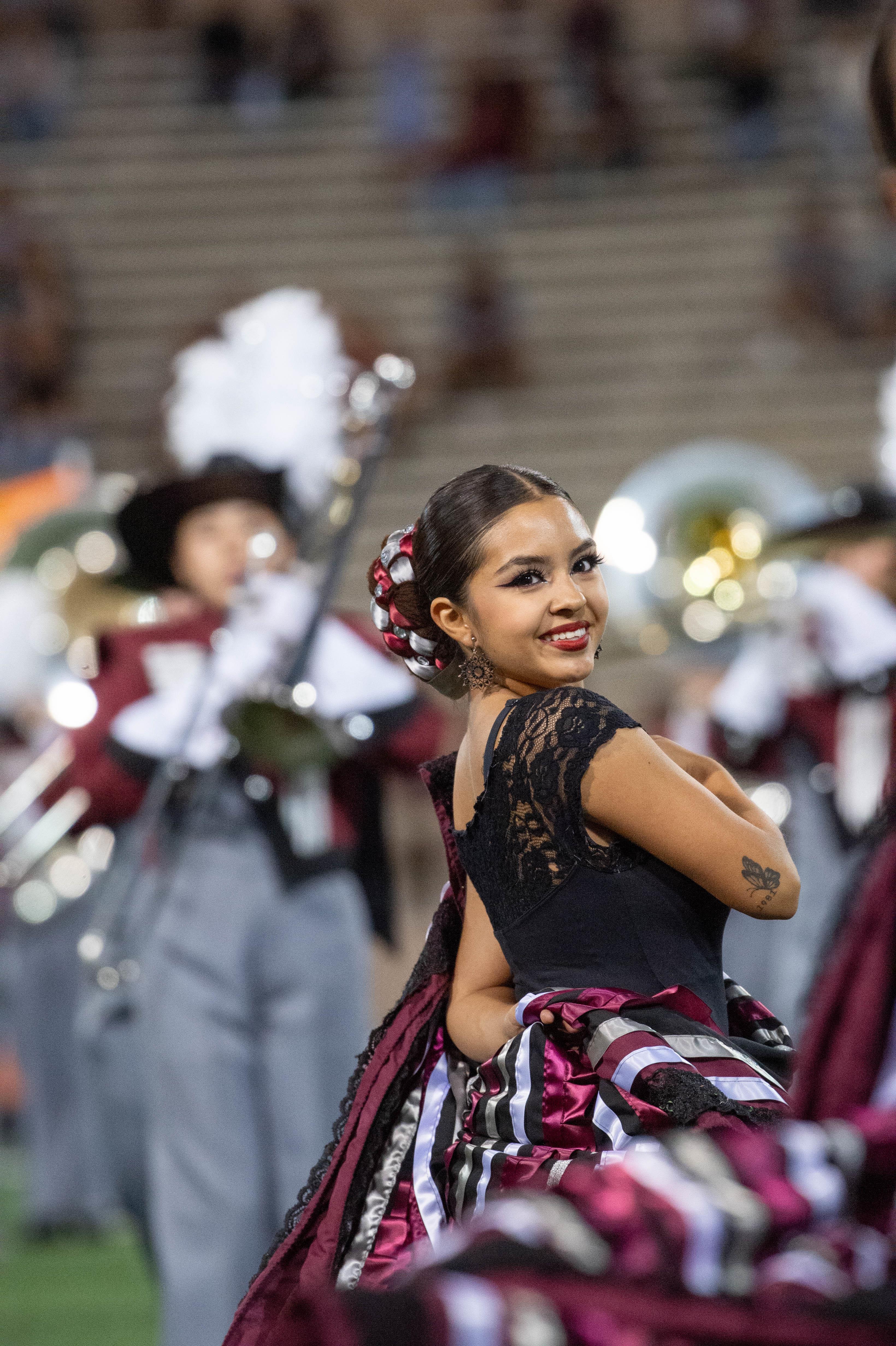“It was so cool and colorful,” Smyth said, “I’m from Iowa so I had never seen that before.” (NMSU photo by Josh Bachman)
Source: NMSU News Release
DATE: June 6, 2024
WRITER: James Staley, 575-646-3071, jastaley@nmsu.edu
At its twirling, stomping and vivid soul, ballet folklórico is a vast collaboration. Over the course of centuries, Indigenous people of North America, Europeans and Africans contributed movements, sounds and styles to make ballet folklórico — traditional Mexican folk dancing — what it is today.
At New Mexico State University, this performance art recently has meshed with another. The result: a unique cultural signature for participants and spectators of NMSU’s famed Pride of New Mexico Marching Band.
A few years ago, when Steven Smyth first arrived at NMSU, he was still green to many of the slices of culture shared between the United States and Mexico in the Borderland. He may not have known what ballet folklórico was, but Smyth, NMSU associate director of bands, knew the performance he had just witnessed during a Hispanic heritage-themed Aggie football game was impressive.
“It was so cool and colorful,” Smyth said, “I’m from Iowa so I had never seen that before.”
That spark, combined with the skill, ongoing dedication and hard work of students, eventually gave the Pride Marching Band its own folklórico group. What started with four student dancers in 2022 now has auditions for its 12 scholarship spots, adding a feature that no other marching band can claim.
“We added something that was very New Mexican to something that was very American,” said Carley Casey, a project support specialist for NMSU’s Institutional Effectiveness, who volunteers to coordinate folklórico.
Smyth credits folklórico’s success to its student-dancers. They are the ones pushing to get in as many shows as possible — folklórico might get its biggest audiences at NMSU football games, but performed at more than 40 other events in 2023.
“It brings joy to me because I’m able to show others the culture and beauty behind it as well as teach and learn from my teammates,” said Mariah Leonard, a captain of the folklórico group.
One of Leonard’s teammates, Sophie Ostos, has been performing folklórico for most of her life. She came to NMSU from Chandler, Arizona, leaving the group she had performed with for 15 years.
“Ever since I was little, I just loved it,” Ostos said of folklórico. “It’s like a community — we are like a family and have all become good friends. When I came here, I was so excited that I found a group.”
The ability to create this expression of their culture together, and to take such pride in sharing it with others is what makes the folklórico group special, Smyth said.
“Adding folklórico and mariachi groups (to the Pride Marching Band) gives more students opportunities to find a place where they belong, both culturally and through personal relationships,” Smyth said. “They are as unique as their dresses are, and a great representation of the university. Inevitably, when you diversify the band, you’re going to make that group better.”
The blending of marching band and folklórico may look symbiotic on the field, but that doesn’t mean it’s easy. Performance days can be long, 10 hours or more, especially if they are doing something special such as sugar skull makeup. Choreography, something that comes solely from the students, also is a challenge. Folklórico has many traditional dances, each reflecting a separate region.
“But when you’re doing something like ‘Fireball’ by Pitbull, it’s completely different,” Ostos said.
The folklórico group shape-shifts, just like the dance they’re performing has throughout history.
“They are having to adapt a lot of traditional stuff to non-traditional roles, but they are really special that way,” Smyth said. “They do a great job of it.”
A version of this story was published in the spring 2024 issue of Panorama. For more stories, visit https://panorama.nmsu.edu.






